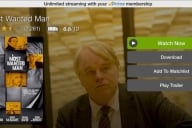You have /5 articles left.
Sign up for a free account or log in.
.jpg)
At the risk of redundancy (or perhaps shameless self-promotion), several issues from the release of my Going Digital survey earlier this week warrant some additional commentary beyond the reporting from Inside Higher Ed and other sources.
First, as noted by Carl Straumsheim writing for Inside Higher Ed, the survey data, based on responses from 2,902 faculty across 29 two and four-year colleges and universities, provide clear and compelling evidence that faculty really attend to the quality of the course materials they select for their courses and that they are also very concerned about cost of course materials for their students.
What's striking about the Going Digital data is that faculty overwhelmingly responded “very important” rather than just “important” on both the quality and cost questions. This runs counter to the usual pattern in almost any survey: “very important” (or “strongly agree”) almost always lags behind “important” (or “agree”), regardless of the issue or the surveyed population. Moreover, the survey numbers on the cost question are compelling given the general, if ungrounded (and now unfounded) characterization of faculty as not concerned about the cost of course materials for their students.
.jpg)
Second, some of survey data could be read as either encouraging or disappointing. The interpretation may depend on if you advocate for, are agnostic about, or are antagonistic towards “going digital.”
For example, 79 percent of the survey participants agreed/strongly agreed that “digital course materials generally cost my students less than traditional print materials.” Presumably all sides would agree that the lower cost of digital is a good thing.
Additionally, 45 percent affirmed that digital course materials “provide significant added value content not available in print.” And a third (35 percent) agreed that digital course materials “provide for a richer and more effective learning experience than print. These numbers can be interpreted in different ways: either that we are early in the process of going digital and doing reasonably well, or that despite significant efforts and financial investments, these numbers fall far short of expectations.
Yet two other data points highlight what might be, by consensus, major challenges in the movement toward going digital:
- less than three in ten (27 percent) of the 2,902 surveyed faculty agreed that digital materials “have a beneficial impact on student learning compared to print.”
- less than a fifth (19 percent) believed that digital course materials “are higher quality than similar print materials.”
Be ye advocate, agnostic, or antagonistic, these last two numbers also suggest that there is much that digital must do better (presumably much better) before it has the full faith and confidence of the majority of college faculty.
Third, the survey data highlight a significant digital access issue – and by extension, issues of digital accessibility. Almost a third (30 percent) of the survey participants (and more than half – 53 percent – in community colleges) expressed concern that their students do not have “easy access” or own technology platforms that would “allow them to make full use of digital materials” for their classes. This means is that significant numbers of students who would benefit from the lower cost of digital (including OER) course materials are not able to do so – especially in community colleges.
And digital access (think digital divide) leads to questions of digital accessibility (think ADA requirements). Data from the 2015 Campus Computing Survey reveal that most CIOs do not believe that their institutions do a good job of addressing the issue of digital access for the disabled. Moreover, my quick search of the archives at Inside Higher Ed (click here and here) and The Chronicle of Higher Education (click here) suggest digital accessibility has become an increasingly contentious issue and that almost every time disabled students take legal against their campuses because of digital access in instruction, the plaintiff(s) win. Commercial publishers may have the resources to invest in making their course materials accessible for the disabled. But are the faculty who want to create and publish OER course materials, trained or able to do so?

In sum, the question about going digital is not one of if, or even when, but rather of how. The logic behind going digital seems flawless, built on the (actual or inferred) promises of lower cost, added-value, and better student outcomes. But to paraphrase the words of a long-ago professor on the first day of a grad school seminar on public policy, “implementation is the movement of cup to lip.”
We can visualize the path, process, and outcomes of going digital (“moving cup to lip”). Getting there, however, involves lots of moving parts: infrastructure and access to digital platforms, better course materials that provide added-value content for student learning, plus clear and compelling evidence, rather than opinion and epiphany, that digital course materials have a beneficial impact on student learning and educational outcomes.
The Going Digital Survey was sponsored by the Independent College Bookstore Association.
Follow me on Twitter: @digitaltweed






